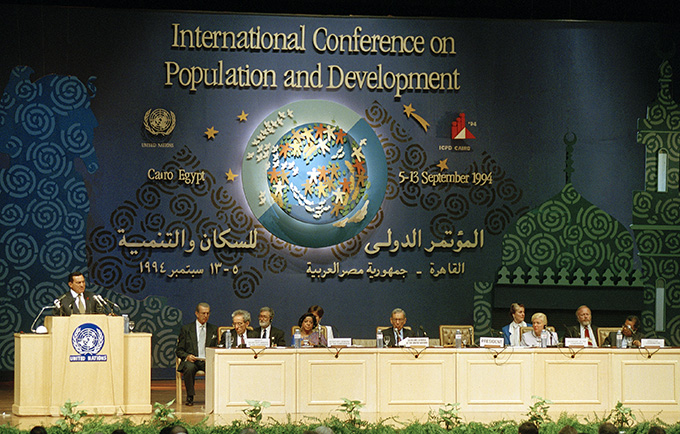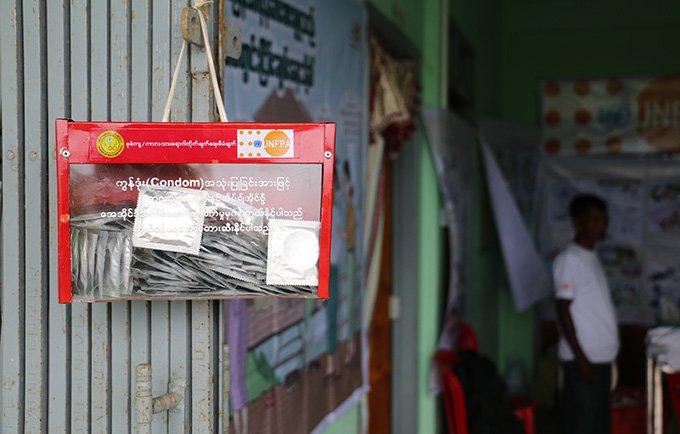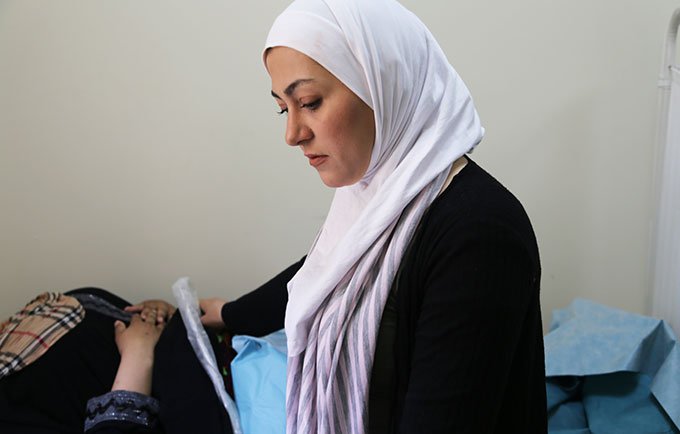An evolving challenge
HIV first shocked the world when it emerged in developed countries in the 1980s. Sub-Saharan Africa was hit hardest and still accounts for over 70 per cent of new infections. Over the last decade and a half, an unprecedented global response has made HIV prevention and treatment services available in almost every country in the world, with over 18 million people accessing life-saving treatment by the end of 2016.
Unfortunately, though, progress in reducing new infections has stagnated in recent years.
Inequalities at the heart of the epidemic
Despite progress in rolling out treatment, HIV remains one of the foremost health and development challenges of our time. Some 2.1 million people acquired the virus in 2015, and within this number are startling inequalities.
Key populations – a term that principally refers to sex workers, men who have sex with men, people who use drugs, transgender people and prisoners – are particularly affected by the epidemic. Their risk is aggravated by punitive laws, stigma, human rights violations, social exclusion, and HIV responses that inadequately address their needs.
For example, HIV prevalence among female sex workers is 10 times higher than HIV prevalence among all other women aged 15-49. An estimated 37 per cent of female sex workers in sub-Saharan Africa are living with HIV.
Globally, men and women make up an equal share of the people living with HIV. However, in sub-Saharan Africa, women account for 58 per cent of people living with the virus. For social and physiological reasons, adolescent girls and young women are particularly vulnerable, with HIV infection rates more than double those of males of the same age group. HIV is the leading cause of death among women of reproductive age, and it contributes significantly to maternal mortality due both to progression of the disease itself and through higher rates of sepsis, anaemia and other pregnancy-related conditions. Women’s and girls’ vulnerability to HIV is driven also by gender inequality, including gender-based violence which limits their ability to make safe choices about their sexual and reproductive health.
And young people are disproportionately affected by HIV. Although the overall number of AIDS-related deaths is down 35 per cent since 2005, estimates suggest that AIDS-related deaths among adolescents are actually rising. In fact, AIDS is the second greatest cause of death among adolescents globally.
Young people’s vulnerability to HIV is exacerbated by a lack of access to comprehensive sexual and reproductive health information and services and by exclusion from decision-making processes. And young people are disproportionately affected by HIV. Although the overall number of AIDS-related deaths is down 35 per cent since 2005, estimates suggest that AIDS-related deaths among adolescents are actually rising. In fact, AIDS is a leading cause of deaths among adolescents in Africa, and it is the second greatest cause of death among adolescents globally.
For all these groups, a dangerous mix of stigma and discrimination, restrictive and punitive laws, and inadequate medical and social services increases the risk of HIV infection and HIV-related illness and death.
UNFPA’s response
As a cosponsor of UNAIDS, UNFPA is committed to the vision of zero new HIV infections, zero discrimination and zero AIDS-related deaths. Addressing HIV is also integral to UNFPA’s mission of achieving universal access to sexual and reproductive health and realizing human rights and gender equality.
In 2014, UNFPA was one of the world's top suppliers of male and female condoms to low- and middle-income countries.
Promoting human rights, reducing inequalities
UNFPA works with partners to increase access to HIV-related services and sexual and reproductive health services for young people, key populations, and women and girls, including those living with HIV. We also support the empowerment of these populations to claim their human rights, access the services they need, and lead healthy and fulfilling lives.
UNFPA also promotes the participation of community-led organizations, key populations and people living with HIV in all aspects of HIV and sexual and reproductive health policy and programming. UNFPA also supports municipalities in addressing micro-epidemics among key populations.
Linking HIV and sexual and reproductive health
In the absence of a cure, prevention is crucial to ending AIDS. This means the world must intensify HIV-prevention measures that have been shown to work. UNFPA focuses on reducing HIV transmission and comprehensively addressing the sexual and reproductive health and rights of key populations, women and girls and young people. Because the majority of HIV infections are sexually transmitted, reducing this mode of transmission is crucial. Working with partners, UNFPA is scaling up age-appropriate and culturally sensitive comprehensive sexuality education.
UNFPA is also increasing access to male and female condoms, which remain the only effective barrier prevention method providing triple protection against HIV, other sexually transmitted infections and unintended pregnancy.
Preventing sexual transmission of HIV
UNFPA also supports the empowerment of women and girls by helping prevent HIV infections among women and by ensuring that women living with HIV have access to rights-based sexual and reproductive health services. And by fighting to eliminate gender-based violence, child marriage and discrimination, UNFPA helps to reduce the vulnerability of women and girls to HIV. The specific needs of women and girls are also factored into UNFPA's humanitarian assistance.
UNFPA also supports the empowerment of young people to protect themselves from HIV, in particular by addressing their sexual and reproductive health needs. And UNFPA strengthens the availability and use of strategic data on young people and HIV, and works closely with youth organizations and networks.
And UNFPA strengthens procurement and supply chain management systems to ensure that condoms are available where people need them. UNFPA also increases awareness of and demand for condoms through the CONDOMIZE! Campaign.
Updated 14 December 2016.









